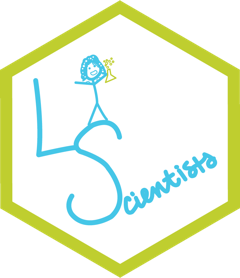Digest #181: Popular Learning Scientists Posts
Cover image by Arduinna from Pixabay
By Althea Need Kaminske
If you, like me, have wondered, “What are people reading on our blog this summer?” then wonder no more! I looked through our most visited pages from the beginning of June until now to see what people have been interested in so far this summer. Perhaps somewhat unsurprisingly, our original posts on the six strategies and how to use them are consistently in our most-read blog posts. Read more about the six strategies and the individual explainers on Dual Coding, Concrete Examples, Elaboration, Interleaving, Spacing, and - the most popular - Retrieval Practice.
While I’m happy to see that those posts are still very popular - as they should be! - I was more interested in our other blog posts that highlight a topic and discuss recent or foundational research on that topic. Below are the top 5 reads from this summer!
5. The Relationship Between Test Anxiety and Exam Performance by Althea Need Kaminske
In this post I review an experiment by Theobald et al. (2002) that examined how anxiety affected performance in German medical students. How does test anxiety affect learning? I concluded: The relationship between test anxiety, working memory, and exam performance is complicated!
4. Be Your Own Teacher: How to Study a Textbook by Rachel Adragna
This post is part of the “Be Your Own Teacher” series that Rachel Adragna put together for us. Rachel breaks down how students can approach learning from a textbook with a template and examples. The whole series is worth checking out for students who may feel a little lost when it comes to studying!
3. Handwritten versus Typed Notes by Carolina Kuepper-Tetzel
In this post Carolina reviews a recent meta-analysis that examines the benefits of handwritten versus typed notes for college students. Which is better? The answer, as always, depends on a few factors.
2. The Science of Motivation by Cindy Nebel
This more recent blog post by Cindy explains some key components of self-determination theory, one of the major theories on how motivation works. She pays special attention to how teachers can use this theory in their classroom.
1.Different Research Methods: Strengths and Weaknesses by Megan Sumeracki
This oldy, but a goody, from 2018 is still one of our most popular posts! In this post Megan breaks down the strengths and weaknesses of descriptive, correlational, and true experimental designs.
From time to time, we pick a theme and provide a curated list of links. If you have a theme suggestion, please don’t hesitate to contact us! Occasionally we publish a guest digest, and If you'd like to propose a guest digest click here. Our 5 most recent digests can be found here:
Digest #176: For When You’re Feeling the Pressure!
Digest #177: Podcast Episodes for Parents and Educators
Digest #178: Boosting Presentation Skills


